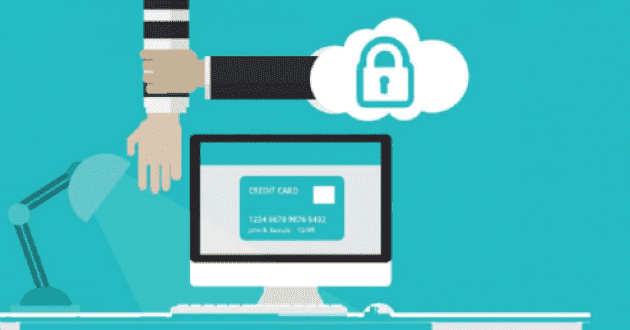Cryptanalysis Guide: Breaking Codes
- - Category: Online Education
- - 08 Mar, 2024
- - Views: 34
- Save
It is a fascinating field that requires a combination of mathematical prowess
In the world of cybersecurity, cryptanalysis plays a vital role in understanding and deciphering encrypted messages and codes. Cryptanalysis, also known as code-breaking or code-cracking, is the process of analyzing and deciphering encrypted information without knowledge of the encryption key. It is a fascinating field that requires a combination of mathematical prowess, analytical skills, and creativity. In this guide, we will delve into the art of cryptanalysis, exploring its techniques, tools, and applications.
Introduction to Cryptanalysis
Cryptanalysis is the study of cryptographic systems with the goal of breaking their security measures to uncover hidden information. It involves analyzing the structure and patterns of encrypted data to identify vulnerabilities and weaknesses that can be exploited to decrypt the information. Cryptanalysis has been used throughout history by governments, military organizations, and intelligence agencies to intercept and decode secret messages sent by adversaries.
Importance of Ethical Hacking
An ethical hacking course provides aspiring cryptanalysts with the necessary knowledge and skills to understand the principles of cryptography and cryptanalysis. These courses cover a wide range of topics, including encryption algorithms, cryptographic protocols, and attack techniques used to break encryption. By enrolling in ethical hacking, individuals can learn ethical and legal methods for conducting cryptanalysis and enhance their ability to identify and mitigate security threats effectively.
Types of Cryptanalysis
Cryptanalysis can be classified into several categories based on the techniques and approaches used to break encryption. Some common types of cryptanalysis include:
- Brute Force Attack: In a brute force attack, the attacker tries every possible key until the correct one is found. This method is time-consuming and resource-intensive but can be effective against weak encryption algorithms with short keys.
- Frequency Analysis: Frequency analysis involves analyzing the frequency of letters or symbols in the encrypted text to identify patterns that can be used to decrypt the message. This technique is particularly useful against substitution ciphers.
- Known Plaintext Attack: In this type of attack, the attacker is in possession of both the plaintext and the encrypted message. By analyzing the relationship between the plaintext and ciphertext, the attacker can deduce information about the encryption key.
- Chosen Plaintext Attack: In a chosen plaintext attack, the attacker can choose plaintexts and observe their corresponding ciphertexts. This allows the attacker to gather information about the encryption algorithm and potentially recover the encryption key.
Tools and Techniques in Cryptanalysis
Cryptanalysis relies on a variety of tools and techniques to analyze encrypted data and uncover hidden information. Some common tools and techniques used in cryptanalysis include:
- Cryptanalysis Software: There are various software tools available for performing cryptanalysis, such as cryptanalysis libraries, decryption software, and cryptographic analysis tools.
- Penetration Testing: Penetration testing, also known as pen testing, involves simulating cyber attacks to identify vulnerabilities in cryptographic systems and assess their security posture.
- Mathematical Analysis: Cryptanalysis often involves mathematical analysis to study the underlying principles of encryption algorithms and identify weaknesses that can be exploited to break the encryption.
- Codebreaking Methods: Codebreaking methods involve using logical reasoning, pattern recognition, and trial and error techniques to decipher encrypted messages and codes.
Ethical Considerations in Cryptanalysis
Ethical considerations are paramount in the field of cryptanalysis, as the techniques and tools used can have significant implications for security and privacy. Ethical cryptanalysts adhere to strict ethical guidelines and principles, such as obtaining proper authorization before conducting cryptanalysis, respecting the privacy of individuals, and disclosing vulnerabilities responsibly to the relevant authorities.
Applications of Cryptanalysis
Cryptanalysis has numerous applications in various domains, including cybersecurity, national security, law enforcement, and intelligence gathering. Some common applications of cryptanalysis include:
- Cybersecurity: Cryptanalysis is used to assess the security of cryptographic systems and identify vulnerabilities that can be exploited by cyber attackers.
- Intelligence Gathering: Intelligence agencies use cryptanalysis to intercept and decrypt encrypted communications sent by adversaries to gather valuable intelligence information.
- Law Enforcement: Law enforcement agencies use cryptanalysis to decrypt encrypted data related to criminal activities, such as encrypted emails, messages, and files.
- Digital Forensics: Cryptanalysis is used in digital forensics to recover encrypted data from electronic devices, such as computers, smartphones, and storage media.
Final Say
Cryptanalysis is a fascinating and essential field in cybersecurity that involves analyzing and deciphering encrypted information. Ethical hacking training provide individuals with the necessary knowledge and skills to understand the principles of cryptanalysis and apply ethical and legal methods for breaking codes. By learning the art of cryptanalysis, individuals can contribute to enhancing cybersecurity measures and protecting sensitive information from unauthorized access. With the right tools, techniques, and ethical considerations, cryptanalysts can unravel the mysteries of encrypted messages and uncover valuable insights hidden within them.


